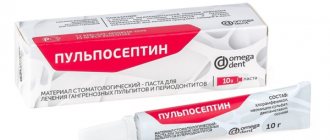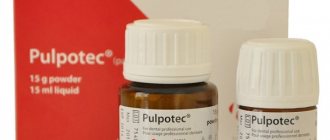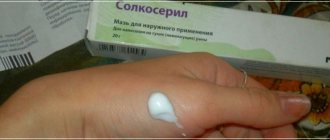Acyclovir
Acyclovir tablets can be taken with meals, since food intake does not significantly interfere with its absorption. The tablets should be taken with a full glass of water.
Adults
Treatment of infections caused by herpes simplex virus
For the treatment of infections caused by the herpes simplex virus, the recommended dose of Acyclovir is 200 mg 5 times a day (every 4 hours, except during night sleep). Usually the course of treatment is 5 days, but can be extended for severe primary infections.
In case of severe immunodeficiency (for example, after bone marrow transplantation) or in case of impaired absorption from the intestine, the oral dose of Acyclovir can be increased to 400 mg. As an alternative, the possibility of using acyclovir in a lyophilisate dosage form for the preparation of a solution for infusion may be considered.
Treatment should begin as soon as possible after infection occurs; in case of relapses, it is recommended to prescribe the drug already in the prodromal period or when the first elements of the rash appear.
Prevention of recurrent infections caused by the herpes simplex virus in patients with normal immune status
To prevent relapses of infections caused by the herpes simplex virus in patients with normal immune status, the recommended dose of Acyclovir is 200 mg 4 times a day (every 6 hours).
For many patients, a more convenient treatment regimen is suitable: 400 mg 2 times a day (every 12 hours).
Sometimes lower doses of Acyclovir are effective: 200 mg 3 times a day (every 8 hours) or 200 mg 2 times a day (every 12 hours).
Some patients may experience exacerbation of infection when taking a total daily dose of 800 mg.
Treatment with Acyclovir should be periodically interrupted for 6-12 months to identify possible changes in the course of the disease.
Prevention of infections caused by herpes simplex virus in patients with immunodeficiency
For the prevention of infections caused by the herpes simplex virus in patients with immunodeficiency, the recommended dose of Acyclovir is 200 mg 4 times a day (every 6 hours). In case of severe immunodeficiency (for example, after bone marrow transplantation) or in case of impaired absorption from the intestine, the oral dose of Acyclovir can be increased to 400 mg 4 times a day. As an alternative, the possibility of using acyclovir in a lyophilisate dosage form for the preparation of a solution for infusion may be considered.
The duration of the preventive course of therapy is determined by the length of the period when there is a risk of infection.
Treatment of chickenpox and herpes zoster
For the treatment of chickenpox and herpes zoster, the recommended dose of Acyclovir is 800 mg 5 times a day (every 4 hours, except during night sleep). The course of treatment is 7 days.
In patients with severe immunodeficiency (for example, after bone marrow transplantation) or in cases of impaired absorption from the intestine, it is necessary to consider the possibility of prescribing acyclovir in a lyophilisate dosage form for the preparation of a solution for infusion.
Treatment for herpes zoster should begin as soon as possible after the rash appears, as in this case the treatment will be more effective.
Treatment of chickenpox in patients with normal immune status should begin within 24 hours of the onset of the rash.
Special patient groups
Children aged 3 years and older
Treatment of herpes simplex virus infections: prevention of herpes simplex virus infections in immunocompromised patients
- aged 3 years and older - the same doses as for adults.
Treatment of chickenpox
- at the age of 6 years and older - 800 mg 4 times a day;
- aged 3 to 6 years - 400 mg 4 times a day.
More accurately, the dose can be determined at the rate of 20 mg/kg body weight (but not more than 800 mg) 4 times a day. The course of treatment is 5 days
Prevention of recurrence of infections caused by the herpes simplex virus in patients with normal immune status; Treatment of herpes zoster There are no data on the dosage regimen.
Elderly patients
The likelihood of renal failure in elderly patients must be taken into account, and doses should be adjusted according to the degree of renal failure (see subsection "Patients with renal failure"). It is necessary to ensure that adequate water balance is maintained.
Patients with impaired renal function
Caution must be exercised when prescribing Acyclovir to patients with impaired renal function. It is necessary to ensure that adequate water balance is maintained. In patients with renal failure, taking acyclovir orally at recommended doses for the treatment and prevention of infections caused by the herpes simplex virus does not lead to the accumulation of the drug to concentrations exceeding established safe levels. However, in patients with creatinine clearance less than 10 ml/min, the dose of Acyclovir is recommended to be reduced to 200 mg 2 times a day (every 12 hours).
For the treatment of chickenpox and herpes zoster, the recommended doses of Acyclovir tablets are:
- with creatinine clearance less than 10 ml/min - 800 mg 2 times a day (every 12 hours);
- with creatinine clearance 10-25 ml/min - 800 mg 3 times a day (every 8 hours).
Similar drugs:
- Ergoferon () Lozenges
- Groprinosin Oral tablets
- Groprinosin Oral tablets
- Tea tree DN Ointment for external use
- Valtrex Oral tablets
- Zanamivir Powder for inhalation, dosed
- Valacyclovir Oral tablets
- Oseltamivir Capsule
- Anaferon for children (Anaferon filios) Lozenges
- Laripront Lozenges
** The Drug Directory is intended for informational purposes only. For more complete information, please refer to the manufacturer's instructions. Do not self-medicate; Before starting to use the drug Acyclovir-AKOS, you should consult a doctor. EUROLAB is not responsible for the consequences caused by the use of information posted on the portal. Any information on the site does not replace medical advice and cannot serve as a guarantee of the positive effect of the drug.
Are you interested in the drug Acyclovir-AKOS? Do you want to know more detailed information or do you need a doctor's examination? Or do you need an inspection? You can make an appointment with a doctor - the Euro lab is always at your service! The best doctors will examine you, advise you, provide the necessary assistance and make a diagnosis. You can also call a doctor at home . Euro lab clinic is open for you around the clock.
** Attention! The information presented in this medication guide is intended for medical professionals and should not be used as a basis for self-medication. The description of the drug Acyclovir-AKOS is provided for informational purposes and is not intended for prescribing treatment without the participation of a doctor. Patients need to consult a specialist!
If you are interested in any other drugs and medications, their descriptions and instructions for use, information about the composition and form of release, indications for use and side effects, methods of use, prices and reviews of drugs, or you have any other questions and suggestions - write to us, we will definitely try to help you.
Indications for use
— Treatment of infections of the skin and mucous membranes caused by the herpes simplex virus, including primary and recurrent genital herpes;
- prevention of relapses of infections caused by the herpes simplex virus in patients with normal immune status;
- prevention of infections caused by the herpes simplex virus in patients with immunodeficiency;
- treatment of chickenpox and herpes zoster (early treatment of herpes zoster with acyclovir has an analgesic effect and can reduce the incidence of postherpetic neuralgia).
Use during pregnancy and lactation.
Fertility
There is no data on the effect of acyclovir on female fertility.
A study of 20 male patients with normal sperm counts found that oral acyclovir up to 1 g per day for 6 months had no clinically significant effect on sperm count, motility or morphology.
Pregnancy
The post-registration registry of pregnancies during treatment with acyclovir collected data on pregnancy outcomes in women taking acyclovir in different dosage forms. In an analysis of registry data, there was no increase in the number of birth defects in infants whose mothers took acyclovir during pregnancy compared with the general population. The identified birth defects were not uniform or consistent, suggesting a common cause.
However, caution should be exercised when prescribing Acyclovir to women during pregnancy and assess the expected benefit to the mother and the possible risk to the fetus.
Breastfeeding period
After taking the drug Acyclovir orally at a dose of 200 mg 5 times a day, acyclovir was determined in breast milk at a concentration ranging from 60 to 410% of the plasma concentration. At such concentrations in breast milk, breastfed infants can receive acyclovir in doses up to 0.3 mg/kg/day. Given this, caution should be exercised when prescribing Acyclovir to nursing women.
Description:
Round flat-cylindrical tablets of white or almost white color with a chamfer and a score.
Pharmacological group:
antiviral agent.
ATX code:
J05AB01
pharmachologic effect
Pharmacological properties
Pharmacodynamics
Mechanism of action
Acyclovir
is a synthetic analogue of a purine nucleoside that has the ability to inhibit in vitro and in vivo human herpes viruses, including herpes simplex virus (HSV) types 1 and 2, varicella zoster virus and herpes zoster virus (Varicella zoster virus (Varicella zoster virus). VZV), Epstein-Barr virus (EBV) and cytomegalovirus (CMV). In cell culture, acyclovir has the most pronounced antiviral activity against HSV-1, followed in descending order of activity by HSV-2, VZV, EBV and CMV.
The inhibitory effect of acyclovir on herpes viruses (HSV-1, HSV-2, VZV, EBV and CMV) is highly selective. Acyclovir is not a substrate for the thymidine kinase enzyme in uninfected cells, therefore acyclovir is of low toxicity to mammalian cells. However, thymidine kinase of cells infected with HSV, VZV, EBV and CMV viruses converts acyclovir into acyclovir monophosphate, a nucleoside analogue, which is then sequentially converted into diphosphate and triphosphate under the action of cellular enzymes. The incorporation of acyclovir triphosphate into the viral DNA chain and subsequent chain termination blocks further replication of the viral DNA.
In patients with severe immunodeficiency, long-term or repeated courses of acyclovir therapy may lead to the emergence of resistant strains, so further treatment with acyclovir may be ineffective. Most isolated strains with reduced sensitivity to acyclovir had a relatively low content of thymidine kinase, as well as a disorder in the structure of the viral thymidine kinase or DNA polymerase. In vitro exposure of herpes simplex virus (HSV) strains to acyclovir may also result in the formation of strains that are less sensitive to it. A correlation has not been established between the sensitivity of herpes simplex virus (HSV) strains to acyclovir in vitro and the clinical effectiveness of the drug.
Pharmacokinetics
Suction
Acyclovir is only partially absorbed from the intestine. After taking 200 mg of acyclovir every 4 hours, the mean maximum steady-state plasma concentration (Cssmax) was 3.1 μM (0.7 μg/ml), and the mean steady-state minimum plasma concentration (Cssmin) was 1.8 μM (0 .4 µg/ml). When administered orally 400 mg and 800 mg of acyclovir every 4 hours, Cssmax was 5.3 µM (1.2 µg/ml) and 8 µM (1.8 µg/ml), respectively, and Cssmin was 2.7 µM (0.6 µg /ml) and 4 µM (0.9 µg/ml), respectively.
Distribution
The concentration of acyclovir in the cerebrospinal fluid is approximately 50% of its concentration in blood plasma.
Acyclovir binds to blood plasma proteins to an insignificant extent (9-33%), so drug interactions due to displacement from binding sites with blood plasma proteins are unlikely.
Removal
In adults, after taking acyclovir orally, the half-life from blood plasma is about 3 hours. Most of the drug is excreted unchanged by the kidneys. The renal clearance of acyclovir significantly exceeds the clearance of creatinine, which indicates that acyclovir is eliminated through not only glomerular filtration, but also tubular secretion. 9-carboxymethoxy-methylguanine is the main metabolite of acyclovir and accounts for about 10-15% of the dose excreted in the urine. When acyclovir was administered 1 hour after taking 1 g of probenecid, the half-life of acyclovir and AUC (area under the concentration-time pharmacokinetic curve) increased by 18 and 40%, respectively.
Overdose
Acyclovir is only partially absorbed from the gastrointestinal tract. As a rule, no toxic effects have been reported with a random single dose of acyclovir up to 20 g. With repeated oral doses over several days of doses exceeding the recommended ones, disturbances from the gastrointestinal tract (nausea, vomiting) and nervous system (headache and confusion) were observed. Sometimes neurological effects such as seizures and coma may occur.
Patients require careful medical monitoring to identify possible symptoms of intoxication. Acyclovir is eliminated from the body by hemodialysis, so hemodialysis can be used to treat overdose.










